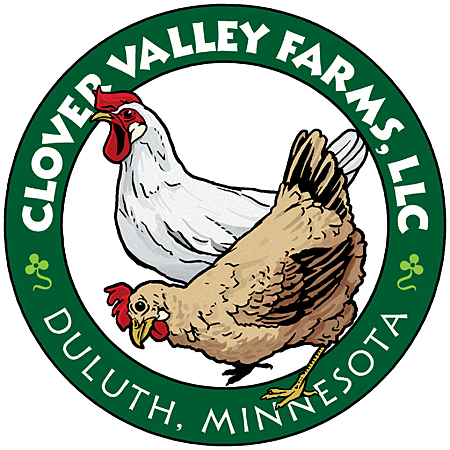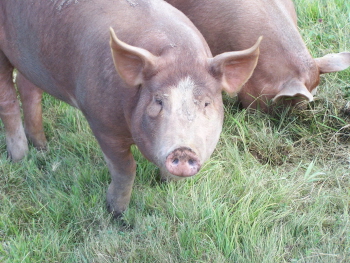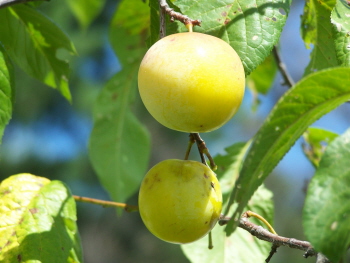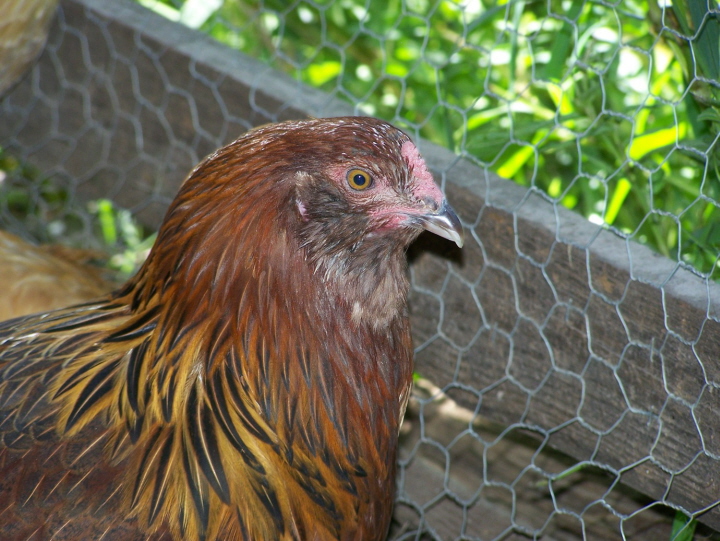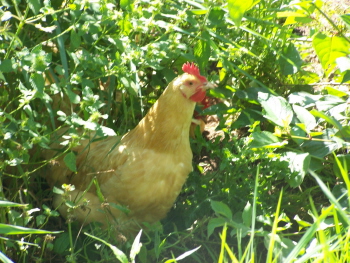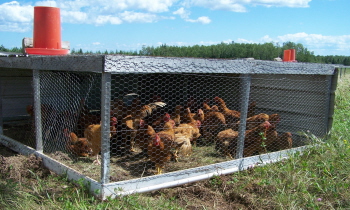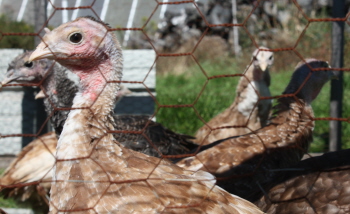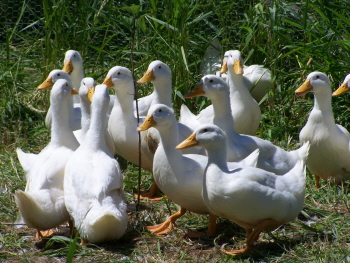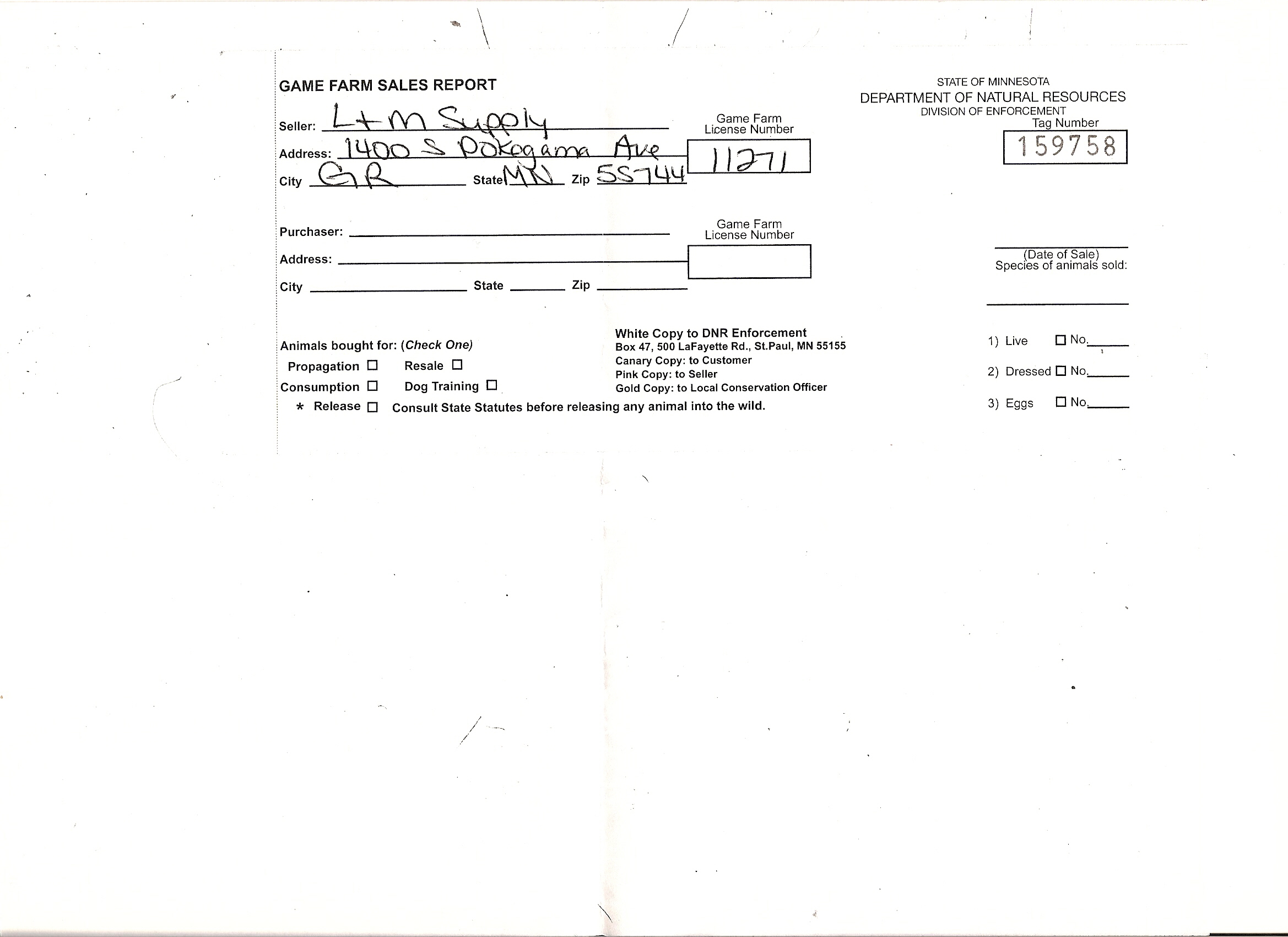Poultry Production
Species & Breeds
Because the composition of Jeff and Cindy’s poultry flocks has been evolving as the farm business grows, a description of the numbers and types of birds they produce is necessarily a snapshot in time. For 2010, their production of laying hens (and males) is summarized in Table 2.
|
Jeff and Cindy chose Barred Plymouth Rocks because they forage well and lay well. Barred Plymouth Rocks lay large brown eggs, as do Buff Orpingtons, and both breeds do well in cold climates. |
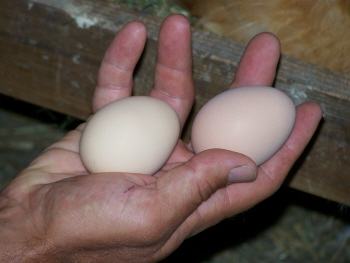 |
| As of 2011, however, Jeff and Cindy decided to discontinue production of Buff Orpingtons, because the hens tend to be broody and the roosters loud and aggressive toward younger birds when they are being integrated into the main flock. Ameraucanas are also hardy in winter; they lay medium-sized eggs that are blue, green, or turquoise | 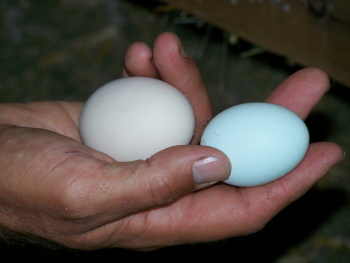 |
Jeff and Cindy mix eggs from the different breeds in their egg cartons and have found that customers love the variety of colors, especially around Easter. |
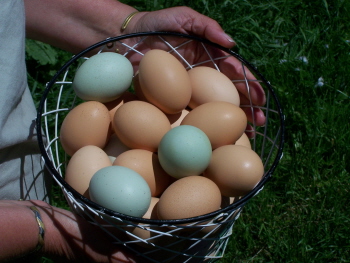 |
Table 2. Laying hen production in 2010
Chickens |
# Birds |
How Acquired |
Status at End of Season |
Ameraucana hens |
22 |
carried over from 20091 |
processed 9/27/10 |
20 |
hatched on farm 9/28/101 |
carried over to 2011 |
|
Buff Orpington hens |
35 |
carried over from 2009 |
processed 9/27/10 |
Buff Orpington males (for breeding) |
5 |
purchased as day old chicks on 4/9/10 |
|
Barred Plymouth Rock hens |
50 |
carried over to 2011 |
1For Ameraucana chicks hatched on the farm in 2010, the breeding male was carried over from 2009 along with the hens.
Production of broilers and other poultry is summarized in Table 3. Cindy and Jeff raise Cornish Broilers for their fast growth rates and Red Broilers for their pasture foraging abilities and consequent flavor. They recognize there are trade-offs with their choice of broiler breeds; Red Broilers don’t grow as fast as Cornish, but Cornish Broilers are not good pasture foragers. Like Cornish Broilers, Pekin ducks are the industry standard breed. Cindy and Jeff also liked how Pekin ducks grow much more quickly than other breeds and have white plumage, so there are no dark pin feathers on processed birds. Cindy and Jeff experimented with heritage turkey breeds in 2010, but were unhappy with their growth rates and finished sizes. In 2011, they switched to Broad-Breasted White turkeys and were very pleased with their growth rates and finished sizes as well as their easygoing disposition. Table 3. Meat poultry production in 2010
1In 2009, Jeff and Cindy began raising only pullets of this breed, because of the higher mortality rates of males as they get older. In 2011, they planned to try raising males again and processing them at 6 weeks, instead of 8 weeks as they do for pullets. 2Cindy and Jeff don’t know which breeds they received; their understanding is that hatcheries sometimes offer “mixes” as a way to sell excess birds from a given breed. Cindy and Jeff believe their 2010 turkeys were mostly Bourbon Reds. See Heritage Turkeys and Game Birds for more information about regulations associated with wild turkeys.
Clockwise from top left: Cornish Broilers, Red Broilers, Pekin ducks, heritage turkeys.
|
